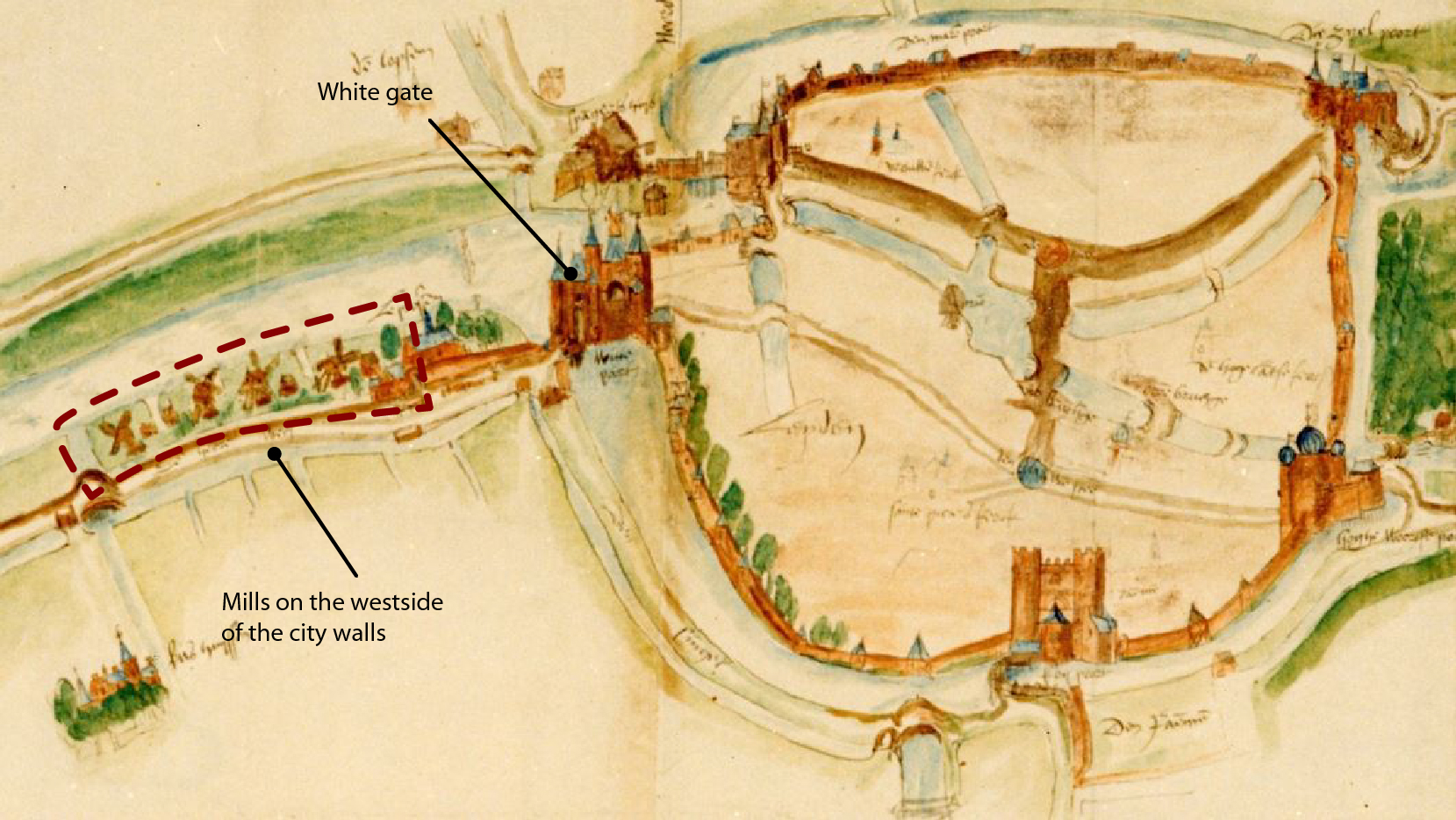
On the map of Pieter Sluyter of 1549 [ELO, PV_PV317], which depicts the industrial area surrounding Leiden, there were four mills on the west side of the city, one of which belonged to Rembrandt's family. Sluyter's drawing is the only known image of the mill. However, not long after, the mill was dismantled as a result of the Eighty Years' War (1568-1648), a violent conflict in which the Dutch fought for political and religious freedom against Spanish Catholic rule.
In 1573, when the Spanish troops moved to besiege the city, all structures outside the city walls that could be used by attackers were cleared, including Rembrandt's grandparents' grain mill, which was dismantled. The family was forced to seek protection within the city walls of Leiden with their four children, including Rembrandt's father Harmen Gerritsz., who was around five years old at the time.
After the siege, a new mill and mill house were established near the "White Gate" on the west side of the city. New economic opportunities arose as political and religious reforms paved the way for what became known as the Dutch Golden Age. Therefore the milling business flourished, despite the significant impact of the siege on Leiden.
